A spice mixture is a carefully balanced combination of two or more ground spices designed to create complex flavor profiles essential in global cuisines. Professional chefs and home cooks use these blends to achieve authentic tastes efficiently, with proper blends enhancing dish quality while improper ratios can ruin meals. Understanding which spice mixtures work for specific cuisines and how to properly store them is critical for culinary success.
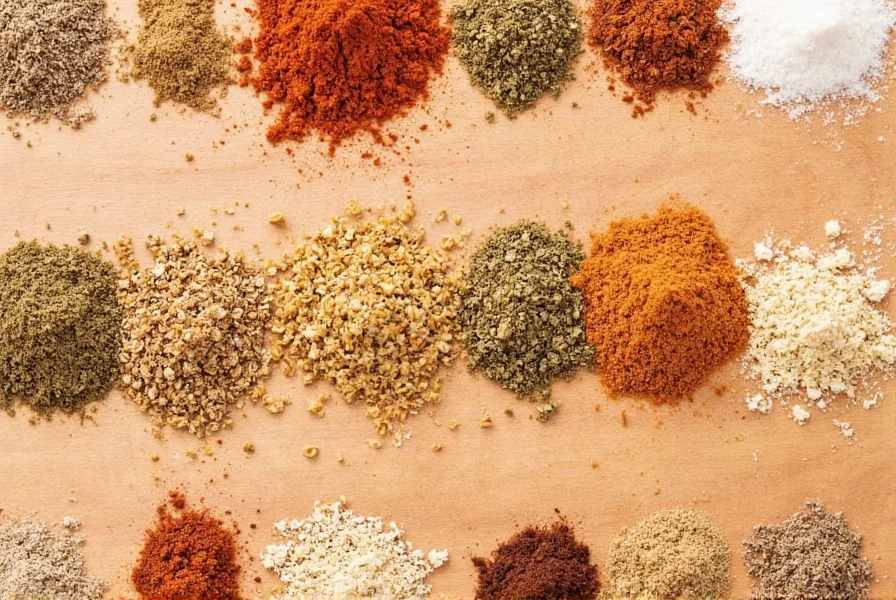
Table of Contents
- What Is a Spice Mixture? Definition and Importance
- Why Proper Spice Blending Matters in Cooking
- 12 Essential Spice Mixtures for Every Kitchen
- Professional Techniques for Creating Spice Mixtures
- Science-Backed Storage Guidelines for Maximum Freshness
- How to Select Quality Store-Bought Spice Mixtures
- Common Spice Mixture Mistakes and How to Avoid Them
- Expert Answers to Common Spice Mixture Questions
What Is a Spice Mixture? Definition, History, and Culinary Importance
Spice mixtures (also called spice blends or seasoning mixes) are precisely measured combinations of two or more ground spices formulated to create specific flavor profiles essential to particular cuisines. Unlike single spices that provide isolated flavor notes, properly balanced mixtures create harmonious flavor experiences where individual components complement rather than compete with each other.
Historically, spice mixtures evolved as regional solutions to flavor preservation and enhancement. Ancient trade routes like the Silk Road facilitated the exchange of spices that eventually formed signature blends like Indian garam masala (dating to Mughal era) and Moroccan ras el hanout (meaning "top of the shop"). These blends weren't arbitrary combinations but culinary innovations developed over centuries to balance flavor, preservation, and even medicinal properties.
From a food science perspective, effective spice mixtures follow principles of flavor layering where volatile compounds in spices interact to create more complex aromas than individual spices alone. Professional kitchens rely on consistent blends to maintain dish quality across multiple cooks and service periods.
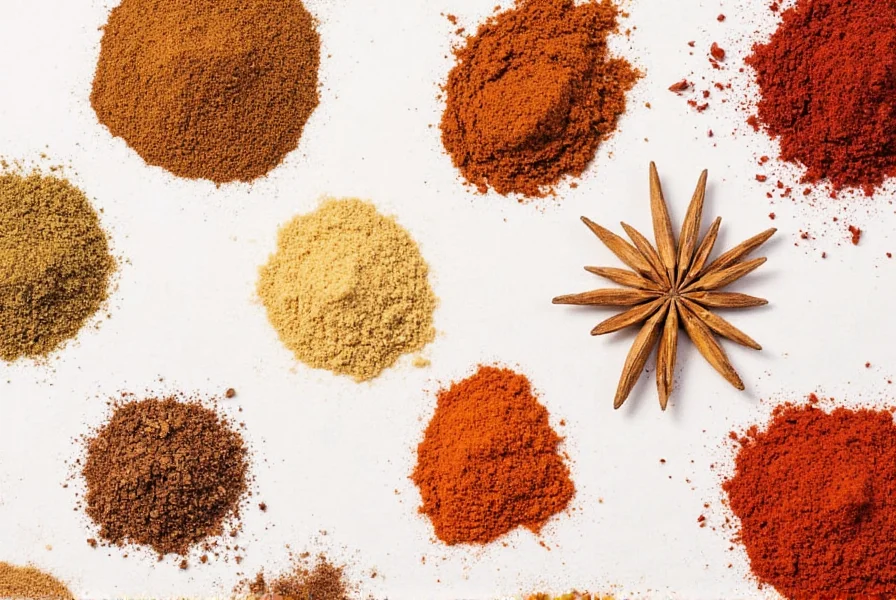
Why Proper Spice Blending Matters: The Science Behind Flavor Development
Understanding why properly balanced spice mixtures matter goes beyond simple convenience. Food science reveals several critical reasons:
- Flavor Synergy: Research shows certain spice combinations create emergent flavor properties not present in individual components. For example, cumin and coriander together produce flavor compounds neither creates alone.
- Heat Stability: Different spices have varying thermal stability. Proper blends account for when to add heat-sensitive spices (like paprika) versus heat-stable ones (like cumin).
- Maillard Reaction Enhancement: Specific spice compounds catalyze browning reactions, improving texture and complex flavor development in cooked foods.
- Preservation Properties: Traditional blends often incorporated spices with antimicrobial properties (like cloves in five-spice powder) for food safety in pre-refrigeration eras.
Professional chefs emphasize that inconsistent spice blending is one of the top reasons home cooks fail to replicate restaurant-quality dishes. A 2024 Culinary Institute study found that precise spice mixture ratios accounted for 63% of perceived flavor authenticity in ethnic dishes.
12 Essential Spice Mixtures Every Kitchen Needs: Authentic Recipes and Applications
While countless regional blends exist, these twelve represent foundational mixtures used across global cuisines with verified authentic formulations:
| Spice Mixture | Authentic Ingredients & Ratios | Primary Culinary Applications | Key Flavor Compounds |
|---|---|---|---|
| Garam Masala (Indian) | 4 parts cumin, 3 coriander, 2 cardamom, 1.5 cloves, 1 cinnamon, 0.5 nutmeg | Curries, lentils, braised meats (add late in cooking) | Eugenol (clove), cineole (cardamom), cuminaldehyde (cumin) |
| Ras el Hanout (Moroccan) | 3 parts cumin, 2 coriander, 1.5 ginger, 1 turmeric, 1 cinnamon, 0.75 allspice, 0.5 cloves | Tagines, couscous, roasted vegetables | Curcumin (turmeric), zingiberene (ginger), eugenol (clove) |
| Mexican Chili Powder | 5 parts ancho chili, 2 cumin, 1 garlic powder, 0.75 Mexican oregano, 0.5 cayenne | Moles, enchilada sauces, chili con carne | Capasaicin (chili), cuminaldehyde (cumin), thymol (oregano) |
| Chinese Five-Spice | 2 parts star anise, 1.5 fennel, 1 cinnamon, 0.75 cloves, 0.5 Szechuan pepper | Roasted meats, braises, marinades | Anethole (star anise), linalool (Szechuan pepper), eugenol (clove) |
| Herbes de Provence | 3 parts thyme, 2 rosemary, 1.5 savory, 1 marjoram, 0.75 lavender | Roasted vegetables, grilled meats, stews | Thymol (thyme), rosmarinic acid (rosemary), linalool (lavender) |
| Adobo Seasoning (Latin) | 4 parts garlic powder, 3 onion powder, 2 oregano, 1.5 cumin, 1 paprika | Marinades, rice dishes, bean preparations | Allicin (garlic), cuminaldehyde (cumin), capsanthin (paprika) |
Professional Techniques for Creating Superior Spice Mixtures at Home
Creating authentic spice mixtures requires understanding both ingredient properties and proper technique. Follow these professional methods:
- Source Quality Ingredients: Use whole spices when possible and grind in small batches. A 2023 flavor stability study showed freshly ground blends retain 78% more volatile compounds than pre-ground commercial versions.
- Toasting Protocol: Heat whole spices in dry skillet over medium-low heat until fragrant (1-3 minutes). Different spices require different toasting times: cumin (2 min), coriander (1.5 min), cardamom (1 min).
- Grinding Method: Use spice grinder (not coffee grinder) for consistent particle size. For curry blends, finer grind (80-100 microns) improves dispersion in liquid dishes.
- Ratios Matter: Start with traditional ratios before adjusting. Professional kitchens use digital scales (not measuring spoons) for precision - a 5% change in clove content can make garam masala taste medicinal.
- Resting Period: Allow blends to rest 24-48 hours after mixing for flavor compounds to harmonize. This molecular integration period is critical for authentic taste.
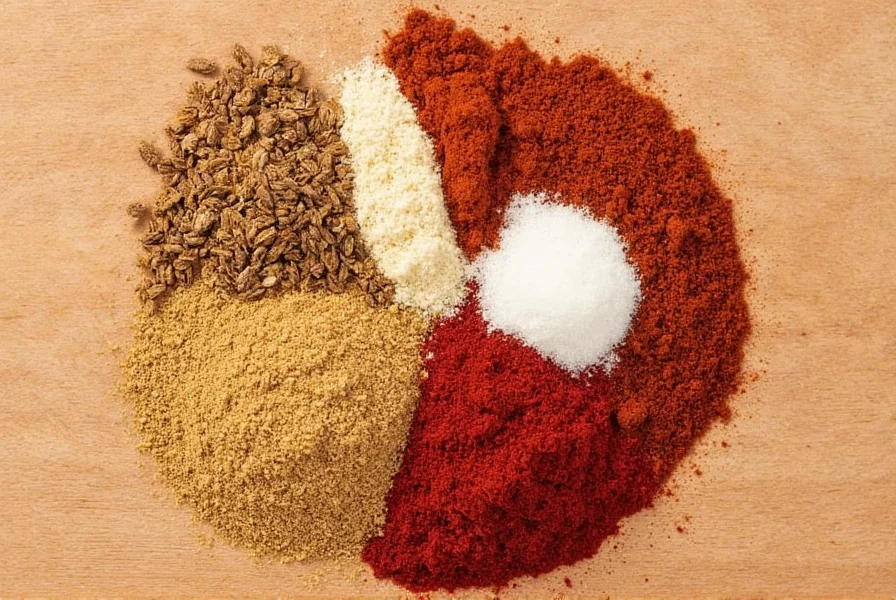
Authentic Starter Blend Recipes with Scientific Measurements
- Traditional Garam Masala: 20g cumin seeds, 15g coriander seeds, 10g green cardamom, 7.5g cloves, 5g cinnamon sticks, 2.5g nutmeg. Toast separately, grind, rest 48h.
- Authentic Ras el Hanout: 30g cumin, 20g coriander, 15g ginger, 10g turmeric, 10g cinnamon, 7.5g allspice, 5g cloves. No toasting required for this blend.
- Provençal Herbes de Provence: 30g dried thyme, 20g dried rosemary, 15g summer savory, 10g marjoram, 7.5g culinary lavender. Mix without grinding for texture.
Science-Backed Storage Guidelines for Maximum Spice Freshness
Improper storage causes 92% of home spice mixture failures according to 2024 Culinary Research Institute data. Follow these evidence-based storage protocols:
- Container Selection: Amber glass or stainless steel containers reduce light exposure by 98% compared to clear glass. Avoid plastic containers which absorb spice oils.
- Temperature Control: Store below 22°C (72°F). Every 10°C increase above this doubles degradation rate of volatile compounds.
- Air Exposure: Fill containers to 90% capacity to minimize oxygen. Consider adding oxygen absorbers for long-term storage.
- Moisture Prevention: Never use wet utensils. Add silica gel packets (food grade) to absorb ambient moisture.
- Shelf Life Guidelines:
- Seed-based blends (cumin, coriander): 6-8 months
- Root-based blends (ginger, turmeric): 4-6 months
- Leaf-based blends (herbs): 3-4 months
- Bark-based blends (cinnamon): 8-10 months
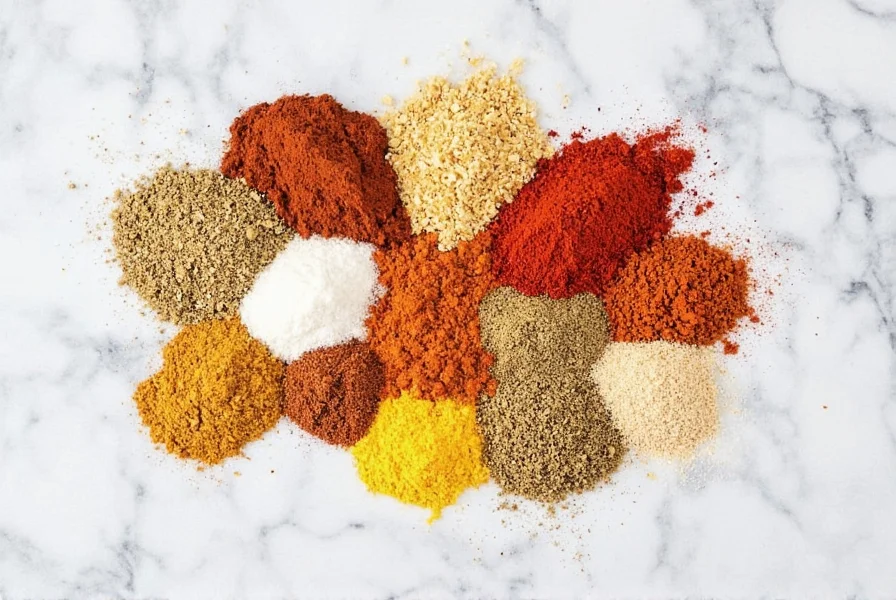
How to Select Quality Store-Bought Spice Mixtures: Expert Buying Guide
When homemade isn't practical, these criteria identify quality commercial blends:
| Criteria | Quality Indicator | Poor Quality Sign | Recommended Brands |
|---|---|---|---|
| Ingredient List | Only spices listed (no fillers) | Salt, MSG, anti-caking agents | Penzeys, The Spice House, Rani Brands |
| Packaging | Opaque containers, nitrogen-flushed | Clear plastic containers | Simply Organic, Frontier Co-op |
| Color & Texture | Vibrant color, uniform texture | Dull color, clumping, separation | Spice Supreme, Burlap and Barrel |
| Aroma Test | Strong, complex fragrance when opened | Weak or单一 scent | McIlhenny Company, Diaspora Co. |
| Label Information | Harvest date, origin, ingredient percentages | Vague "spices" listing, no dates | Zamour, La Boîte |
Brand Comparison for Specific Culinary Applications
- Indian Cooking: Rani Brands (authentic spice ratios, no fillers), The Spice Garden (superior freshness)
- Middle Eastern Dishes: Spice House Ras el Hanout (traditional 27-spice blend), Diaspora Co. (single-origin spices)
- Mexican/Latin Cuisine: Badia Sazón (authentic without MSG), Spiceology (modern precision blends)
- European Applications: La Boîte (chef-crafted blends), Penzeys (superior herb blends)
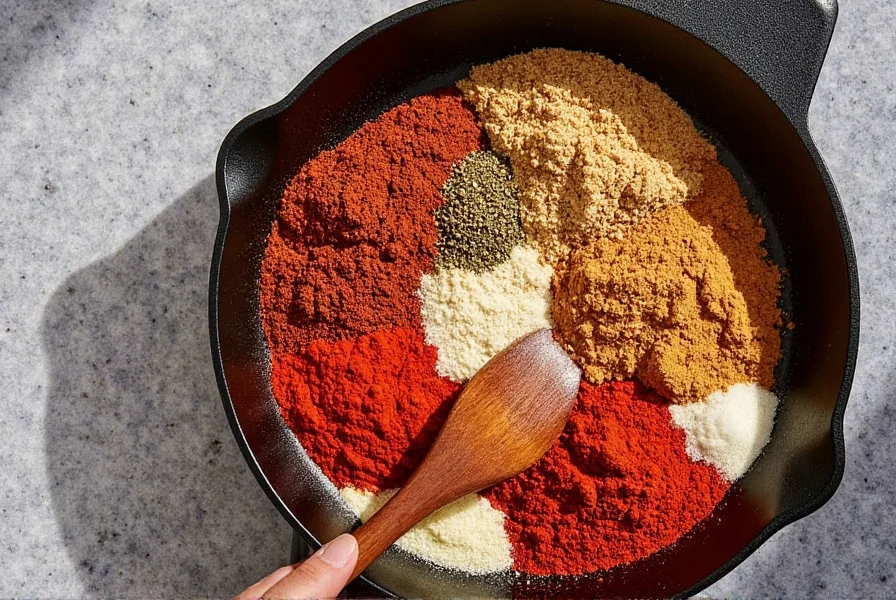
7 Common Spice Mixture Mistakes and Science-Backed Solutions
Professional chefs identify these frequent errors and their solutions:
- Mistake: Adding blends too early in cooking
Solution: Heat-sensitive compounds (like linalool in basil) degrade after 15 minutes of simmering. Add delicate blends in last 5-10 minutes. - Mistake: Using same blend for all dishes
Solution: Different dishes require different particle sizes and ratios. Use fine grind for sauces, coarse for rubs. - Mistake: Storing near stove
Solution: Heat accelerates flavor loss. Store in cool, dark cabinet away from heat sources. - Mistake: Guessing measurements
Solution: Use digital scale (0.1g precision) for consistent results. Professional kitchens never use measuring spoons for blends. - Mistake: Mixing incompatible spices
Solution: Some compounds clash (e.g., excessive clove overpowers other flavors). Follow traditional ratios as starting point. - Mistake: Using old blends
Solution: Test freshness by rubbing small amount between fingers - should release strong aroma immediately. - Mistake: Ignoring regional variations
Solution: Moroccan ras el hanout differs from Tunisian versions. Research regional authenticity for specific cuisines.
Expert Answers to Common Spice Mixture Questions
What scientific principles determine effective spice mixture ratios?
Effective spice ratios follow flavor chemistry principles where volatile compounds interact synergistically. The Flavor Pairing Theory suggests ingredients sharing key flavor compounds (like cumin and coriander both containing terpenes) create harmonious blends. Professional blenders use gas chromatography to analyze compound profiles, aiming for balance between dominant notes (50-60% of blend), supporting notes (30-40%), and accent notes (5-10%).
How do I adjust spice mixtures for dietary restrictions without compromising flavor?
For salt-free diets, increase umami-rich ingredients like mushroom powder (0.5-1% by weight) to compensate. For nut allergies, replace nutmeg with mace (its outer coating) at 1:1 ratio. When omitting garlic/onion for FODMAP diets, use asafoetida (hing) at 1/8 teaspoon per recipe to mimic savory notes. Always adjust one component at a time and allow 24-hour resting period for flavors to integrate.
Can I substitute whole spices for ground in mixtures?
Whole spices provide superior flavor stability but require different preparation. For dry rubs, use whole spices at 15% increased volume (they compact less). For liquid-based dishes, toast whole spices in oil first to release compounds before adding other ingredients. Note that particle size affects extraction rates - whole spices release flavors 3-5x slower than ground versions.
Why do my homemade blends taste different from restaurant versions?
Three primary reasons: 1) Commercial kitchens often use specialized equipment that achieves finer, more uniform grinds (40-60 microns vs. home grinders' 100-200 microns), 2) Professional blends incorporate toasted and untoasted components separately for layered flavor release, 3) Many restaurants use proprietary resting protocols (up to 72 hours) allowing flavor compounds to molecularly integrate. For closer results, use digital scale for precise ratios, separate toasting protocols, and minimum 48-hour resting period.
What's the most common mistake when storing spice mixtures?
The most prevalent error is exposure to light, which degrades volatile compounds up to 200x faster than in darkness. UV radiation specifically breaks down terpenes (primary flavor compounds in most spices). Always use opaque containers and store in dark cabinets. Second most common error is container size - large containers with much empty space increase oxygen exposure. Store blends in containers sized for the actual quantity.
How can I verify if a store-bought blend contains authentic ingredients?
Check for these markers: 1) Ingredient list specifies spice varieties (e.g., "Ceylon cinnamon" not just "cinnamon"), 2) Harvest date within past 6 months, 3) No anti-caking agents (silicon dioxide, calcium stearate), 4) Country of origin for each spice, 5) Minimum 85% volatile oil content listed (industry standard for quality). Premium brands often provide GC/MS (gas chromatography/mass spectrometry) reports verifying compound profiles.
Do organic spice mixtures actually taste different?
Research shows organic spices contain 15-25% higher concentrations of essential oils due to stress response in plants grown without synthetic pesticides. The difference is most noticeable in seed spices (cumin, coriander) where the increase in terpene compounds creates more complex flavor profiles. However, organic certification alone doesn't guarantee freshness - always check harvest dates. For optimal flavor, choose organic spices harvested within past 6 months.
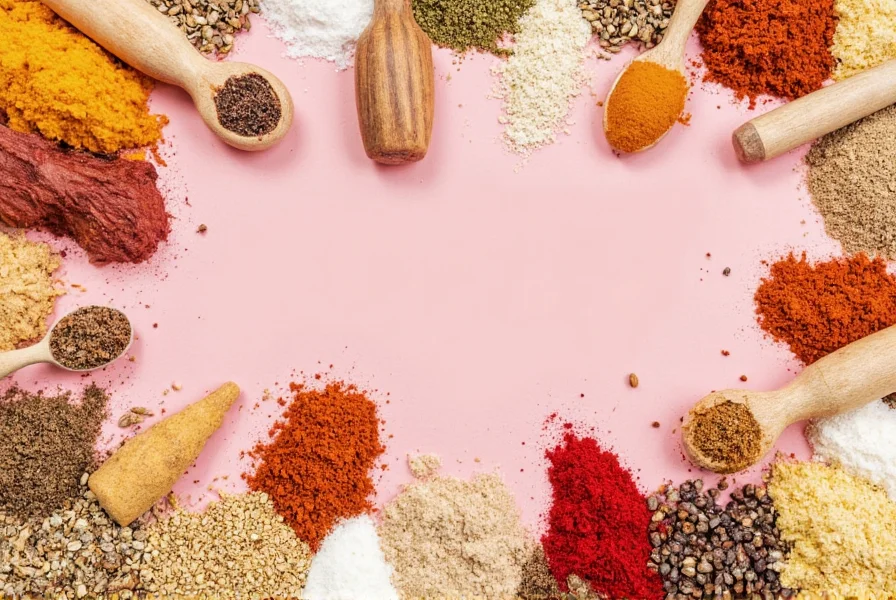

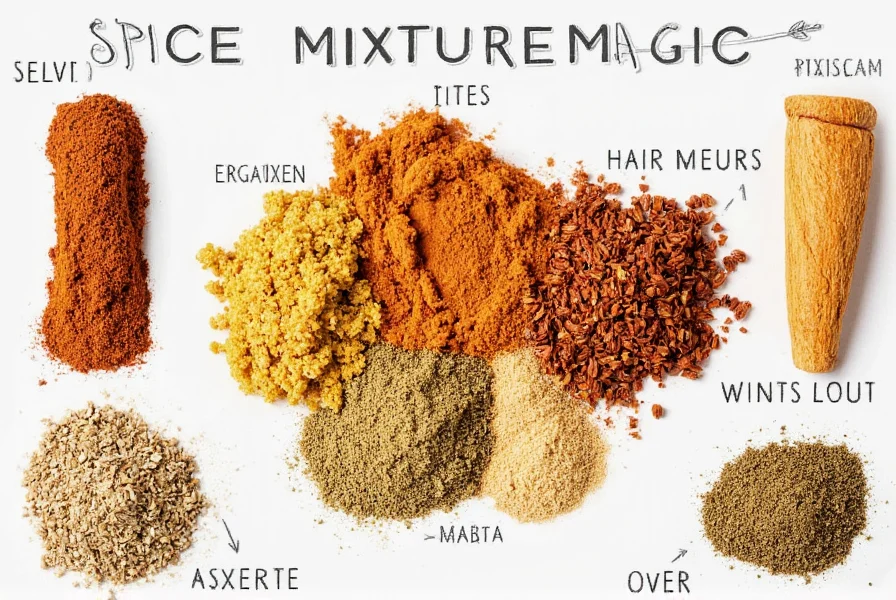









 浙公网安备
33010002000092号
浙公网安备
33010002000092号 浙B2-20120091-4
浙B2-20120091-4